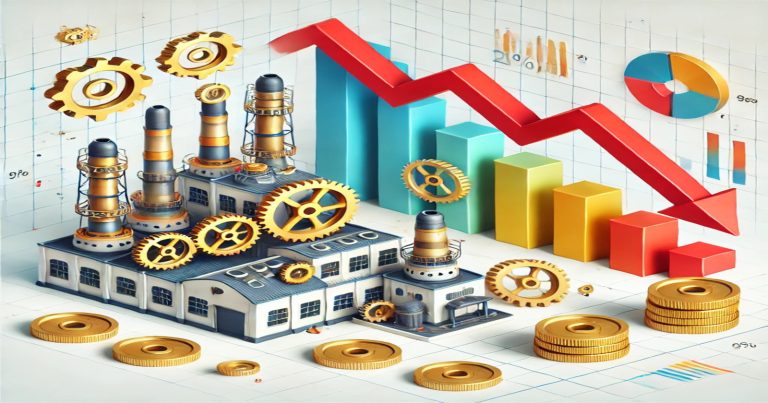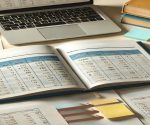Depreciation on machinery journal entry refers to the process of recording the reduction in the value of machinery over time in the books of accounts. In accounting, when you use machinery for a long time, its value decreases. This loss in value is called depreciation. To record this in the books, you must make journal entries every month or year depending on your business policy. Depreciation on machinery journal entry helps show the correct value of machinery and true profit or loss of a business.
What is Depreciation?
Every business buys assets like machinery, computers, or vehicles. These assets help the business do its work and earn money. But these assets do not last forever. They lose their value every year. This decrease in value is called depreciation. Think of a new bike. It works well when it’s new. But after a few years, it doesn’t run like before. Its value goes down. The same happens to machines in a factory. Businesses record this loss in value every year in their accounts. This is called depreciation on fixed assets.
Businesses use depreciation to spread the cost of the asset over its useful life. This helps them show the correct expense each year and calculate the right profit. Depreciation also helps in planning for replacing the machinery in the future. In accounting, depreciation is not a cash loss. It is just an expense shown in the books. There is no money going out of the business. It is only a reduction in the value of the asset in the records.
Types of Depreciation Accounting
There are many ways to calculate depreciation. These are called types of depreciation accounting. The common ones are:
- Straight Line Method
- Reducing Balance Method
- Units of Production Method
- Sum-of-the-Years-Digits Method
In India, most businesses use the straight-line and reducing balance methods. These methods affect how the journal entry is made in the books. Each method has its own way of spreading the cost. Some give equal expense every year, like straight-line. Some give more expense in the first years, like the reducing balance method.
How to Record Depreciation on Machinery?
When a business buys a machine, it becomes a fixed asset. Every year, the machine’s value decreases due to use and age. Businesses record this decrease by making a journal entry. This step-by-step guide helps you understand how to record depreciation on machinery.
Step 1: Know the Cost and Life of the Machinery
To record depreciation, first know how much the machine costs and how long you will use it. Suppose a machine costs ₹10,00,000 and you plan to use it for 10 years. Then you can spread the cost over 10 years.
Also, check if the machine has a salvage value. Salvage value is the amount you expect to get after using the machine fully. Suppose you think the machine can be sold for ₹1,00,000 after 10 years. Then depreciation is calculated on ₹9,00,000 (₹10,00,000 – ₹1,00,000).
Step 2: Choose the Depreciation Method
There are two main ways to record depreciation:
- Straight Line Method: Equal amount of depreciation every year.
- Reducing Balance Method: Higher depreciation in early years, lower later.
Choose the one that suits your business. If the machine is used the same every year, straight line is good. If usage is heavy in the first years, use reducing balance.
Step 3: Calculate the Depreciation Amount
Using the straight-line method:
(Cost – Salvage Value) / Useful Life
For example:
(₹10,00,000 – ₹1,00,000) / 10 years = ₹90,000 per year
Using reducing balance:
Depreciation = Opening Book Value × Depreciation Rate
Suppose rate = 20%
Year 1: ₹10,00,000 × 20% = ₹2,00,000
Year 2: ₹8,00,000 × 20% = ₹1,60,000
and so on.
Step 4: Pass the Journal Entry
To show depreciation in your books, use this format:
Journal Entry for Depreciation:
Depreciation A/c Dr.
To Machinery A/c
Or, to show accumulated depreciation separately:
Depreciation A/c Dr.
To Accumulated Depreciation A/c
This entry reduces the value of machinery and shows depreciation as an expense.
Step 5: Transfer Expense to Profit & Loss Account
At the year-end, transfer depreciation expense to P&L account.
Profit & Loss A/c Dr.
To Depreciation A/c
This shows depreciation in your business expenses and helps calculate true profit.
Depreciation on Machinery Journal Entry with Examples
Recording depreciation helps your books stay accurate. In this section, we give simple depreciation journal entry example to show how you can use them in real life.
Example 1: Straight Line Depreciation
Let’s say a business buys a machine on 1st April 2024 for ₹5,00,000. It has no salvage value and useful life is 5 years. So yearly depreciation is:
₹5,00,000 / 5 = ₹1,00,000
Entry at year-end (31st March 2025):
Depreciation A/c Dr. ₹1,00,000
To Machinery A/c ₹1,00,000
Or, if you maintain a separate account:
Depreciation A/c Dr. ₹1,00,000
To Accumulated Depreciation A/c ₹1,00,000
Then transfer the expense:
Profit & Loss A/c Dr. ₹1,00,000
To Depreciation A/c ₹1,00,000
Example 2: Reducing Balance Method
Let’s assume the machine cost is ₹4,00,000 and depreciation rate is 25%.
Year 1: ₹4,00,000 × 25% = ₹1,00,000
Year 2: ₹3,00,000 × 25% = ₹75,000
Year 3: ₹2,25,000 × 25% = ₹56,250
Pass the same kind of entries each year.
| Year | Opening Value | Depreciation | Closing Value |
| 2024 | ₹5,00,000 | ₹1,00,000 | ₹4,00,000 |
| 2025 | ₹4,00,000 | ₹1,00,000 | ₹3,00,000 |
| 2026 | ₹3,00,000 | ₹1,00,000 | ₹2,00,000 |
This method is clear and easy for students to understand. Use this to prepare for your depreciation expense journal entry practice.
Common Mistakes While Recording Depreciation Entries
Recording depreciation is simple but students often make errors. These mistakes affect profit, tax, and asset values. Avoiding these will help your accounting for machinery depreciation stay correct.
Mistake 1: Wrong Account Used
Many students wrongly debit the asset account instead of depreciation account. They must debit the depreciation account and credit accumulated depreciation or the asset.
Wrong:
Machinery A/c Dr.
To Cash A/c
Correct:
Depreciation A/c Dr.
To Machinery A/c
Mistake 2: Not Transferring Depreciation to P&L
Some forget to transfer depreciation expense to P&L. This leaves the expense unrecorded in profits and affects final results.
Always pass:
Profit & Loss A/c Dr.
To Depreciation A/c
Mistake 3: Mixing Methods
Do not mix straight line depreciation journal entry and reducing balance depreciation entry in the same ledger. Stick to one method unless there’s a valid change.
Mistake 4: Skipping Monthly Entries
If a business does monthly accounting, pass monthly depreciation entry not yearly.
Monthly Entry:
If annual depreciation = ₹12,000, monthly = ₹1,000
Depreciation A/c Dr. ₹1,000
To Machinery A/c ₹1,000
Mistake 5: Ignoring Tally Format
When using accounting software like Tally, follow depreciation journal entry in tally format. Choose “Depreciation” under indirect expenses and “Machinery” under fixed assets.
Mistake 6: Forgetting Asset Details
Always write proper details of the machine, date of purchase, and useful life. It helps track depreciation correctly in the journal entries for asset depreciation.
Relevance to ACCA Syllabus
Understanding how to account for depreciation on fixed assets like machinery is fundamental in Financial Reporting (FR) and Strategic Business Reporting (SBR) papers in the ACCA qualification. It is directly linked with IAS 16 – Property, Plant and Equipment, a core IFRS standard. ACCA students must understand how depreciation impacts both the income statement and balance sheet, and how to journalize these correctly under international accounting standards.
Depreciation on Machinery Journal Entry ACCA Questions
Q1: Under IAS 16, which account is typically credited when recording depreciation using the accumulated depreciation method?
A) Machinery Account
B) Depreciation Expense Account
C) Accumulated Depreciation Account
D) Cash Account
Ans: C) Accumulated Depreciation Account
Q2: Which of the following journal entries best reflects annual straight-line depreciation on machinery?
A) Depreciation A/c Dr. | To Cash A/c
B) Depreciation A/c Dr. | To Accumulated Depreciation A/c
C) Machinery A/c Dr. | To Depreciation A/c
D) P&L A/c Dr. | To Machinery A/c
Ans: B) Depreciation A/c Dr. | To Accumulated Depreciation A/c
Q3: In financial reporting, depreciation on machinery is classified as:
A) A liability
B) An expense
C) An equity item
D) A revenue
Ans: B) An expense
Q4: Which of these methods is allowed under IAS 16 for calculating depreciation?
A) Straight-line
B) Reducing balance
C) Units of production
D) All of the above
Ans: D) All of the above
Q5: What is the effect of depreciation on the statement of financial position?
A) Increases total equity
B) Decreases non-current liabilities
C) Reduces the carrying value of fixed assets
D) Increases current assets
Ans: C) Reduces the carrying value of fixed assets
Relevance to US CMA Syllabus
In the US CMA Part 1 (Financial Planning, Performance, and Analytics), depreciation accounting helps candidates understand cost allocation, fixed asset management, and financial statement impacts. Knowing how to record depreciation journal entries and differentiate between depreciation methods like straight-line and declining balance is essential for internal reporting and budgeting.
Depreciation on Machinery Journal Entry CMA Questions
Q1: In managerial accounting, which depreciation method provides the highest expense in the early years?
A) Straight-line
B) Units of production
C) Declining balance
D) Sinking fund
Ans: C) Declining balance
Q2: What type of account is “Depreciation Expense” classified under?
A) Current asset
B) Operating expense
C) Liability
D) Capital
Ans: B) Operating expense
Q3: What is the impact of recording depreciation on net income?
A) It increases net income
B) It decreases net income
C) It has no impact
D) It increases gross margin
Ans: B) It decreases net income
Q4: What is the main purpose of recording depreciation in internal reports?
A) Tax calculation
B) Cash flow tracking
C) Cost allocation
D) Shareholder reporting
Ans: C) Cost allocation
Q5: Which journal entry reflects a monthly depreciation record for machinery?
A) Cash A/c Dr. | To Machinery A/c
B) Machinery A/c Dr. | To P&L A/c
C) Depreciation Expense A/c Dr. | To Accumulated Depreciation A/c
D) Operating Expense A/c Dr. | To Revenue A/c
Ans: C) Depreciation Expense A/c Dr. | To Accumulated Depreciation A/c
Relevance to US CPA Syllabus
In the US CPA FAR (Financial Accounting and Reporting) section, depreciation entries are tested through asset valuation, long-lived assets, and impairment. Candidates must know U.S. GAAP rules on depreciation and how they affect financial statement disclosures, asset balances, and tax implications.
Depreciation on Machinery Journal Entry CPA Questions
Q1: Under U.S. GAAP, what is the effect of depreciation on the balance sheet?
A) It increases liabilities
B) It increases the carrying value of machinery
C) It reduces the book value of fixed assets
D) It increases capital reserves
Ans: C) It reduces the book value of fixed assets
Q2: What is the proper journal entry to record depreciation under U.S. GAAP?
A) Depreciation Expense A/c Dr. | To Machinery A/c
B) Machinery A/c Dr. | To Accumulated Depreciation A/c
C) Depreciation Expense A/c Dr. | To Accumulated Depreciation A/c
D) Accumulated Depreciation A/c Dr. | To Cash A/c
Ans: C) Depreciation Expense A/c Dr. | To Accumulated Depreciation A/c
Q3: Which of the following is NOT a valid method for calculating depreciation?
A) Straight-line
B) Sum-of-the-years-digits
C) Declining balance
D) Net realizable value
Ans: D) Net realizable value
Q4: Which concept is applied when recording depreciation in accrual accounting?
A) Cost-benefit principle
B) Revenue recognition
C) Matching principle
D) Entity concept
Ans: C) Matching principle
Q5: Which U.S. GAAP statement covers the accounting for property, plant, and equipment?
A) ASC 740
B) ASC 350
C) ASC 360
D) ASC 820
Ans: C) ASC 360
Relevance to CFA Syllabus
In the CFA Level 1 and 2 exams, depreciation is a critical concept in Financial Reporting and Analysis (FRA). Candidates must understand how depreciation methods impact financial ratios, earnings quality, cash flow, and valuation models. Both IFRS and U.S. GAAP treatments are tested, especially with how they affect investor decisions.
Depreciation on Machinery Journal Entry CFA Questions
Q1: What is the impact of accelerated depreciation on net income in early years?
A) Higher net income
B) No change in net income
C) Lower net income
D) Net income remains the same over all years
Ans: C) Lower net income
Q2: Under IFRS, where is depreciation expense recorded in the financial statements?
A) Other Comprehensive Income
B) Statement of Cash Flows
C) Income Statement
D) Equity Statement
Ans: C) Income Statement
Q3: Which depreciation method best matches expense to usage?
A) Straight-line
B) Declining balance
C) Units of production
D) Sum-of-the-years-digits
Ans: C) Units of production
Q4: Which financial ratio is most affected by the method of depreciation used?
A) Quick ratio
B) Return on Assets (ROA)
C) Dividend payout ratio
D) Current ratio
Ans: B) Return on Assets (ROA)
Q5: Depreciation is considered what kind of expense in valuation models?
A) Operating non-cash expense
B) Financing expense
C) Extraordinary item
D) Non-operating expense
Ans: A) Operating non-cash expense


